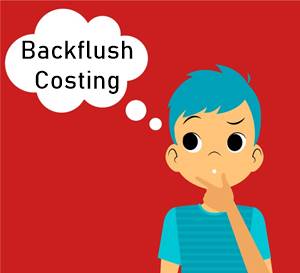Absorption Costing
What is Absorption Costing?
Absorption costing is a costing method that includes all the costs incurred in the Manufacturing process—both direct and indirect costs. These costs are absorbed into the cost of the finished product, providing a comprehensive view of production expenses.

This method ensures that all manufacturing costs, including raw material costs, labour costs, and fixed and variable overheads, are accounted for in the cost of goods sold and ending inventory. It offers an accurate representation of the cost to produce an inventory, which is vital for pricing decisions and financial reporting.
The costs included in the manufacturing of a product are divided into direct and indirect costs. Direct costs consist of raw material costs, physical labour, and production-specific expenses. Indirect costs, also known as overheads, include utilities, rent, and administrative expenses related to production.
Absorption costing results in a higher ending inventory valuation on the Balance Sheet and lower expenses on the Income statement, as a portion of the fixed overhead costs is deferred to future periods through inventory.
Benefits of Absorption Costing
Comprehensive Cost Analysis: Absorption costing provides a complete picture of the total cost involved in production, helping businesses understand profitability.
Compliance with accounting standards: It aligns with Generally Accepted Accounting Principles (GAAP) and International Financial Reporting Standards (IFRS), making it mandatory for external financial reporting.
Accurate Pricing Decisions: By including fixed overheads, businesses can set prices that ensure all costs are covered, contributing to better profit margins.
Better Inventory Valuation: It offers a more accurate inventory valuation, as the fixed overhead costs are allocated to unsold products, reflecting true production costs.
Talk to our investment specialist
Example of Absorption Costing
To better understand absorption costing, consider this example:
XYZ Company produces biscuits. In April, the company manufactured 20,000 biscuit packets, of which 19,000 packets were sold. This leaves 1,000 packets in inventory at the month’s end.
Direct Costs: Assume each biscuit packet costs Rs. 8, which includes Raw Materials and labour expenses.
Fixed Overhead Costs: These are Rs. 40,000 for the production Facility for the month.
Under the absorption costing method, the fixed overhead costs are allocated across all units produced. This means Rs. 2 is assigned to each biscuit packet for fixed overheads (Rs. 40,000 ÷ 20,000 units).
The total absorption cost per biscuit packet becomes Rs. 10 (Rs. 8 direct costs + Rs. 2 overhead costs).
Cost of Goods Sold (COGS): For 19,000 sold packets, the total cost is Rs. 10 per packet × 19,000 = Rs. 1,90,000.
Ending Inventory: For the remaining 1,000 packets, the inventory value is Rs. 10 per packet × 1,000 = Rs. 10,000.
This example highlights how absorption costing allocates costs, ensuring accurate financial reporting and pricing.
Absorption Costing Vs. Variable Costing
Absorption Costing and Variable costing differ in their treatment of fixed overhead costs. While absorption costing is about allocating fixed overhead costs.
| Aspect | Absorption Costing | Variable Costing |
|---|---|---|
| Treatment of Fixed Overheads | Allocates fixed overhead costs across all units manufactured for the period. | Treats fixed overhead costs as a period expense and reports them separately. |
| Per-Unit Cost of Fixed Overheads | Determines a per-unit cost of fixed overheads. | Does not determine a per-unit cost of fixed overheads. |
| Impact on Inventory | Includes fixed overhead costs in inventory valuation, resulting in higher inventory values. | Excludes fixed overhead costs from inventory valuation, resulting in lower inventory values. |
| Financial Reporting | Defers fixed overhead costs to inventory, leading to potentially higher profits. | Expenses all fixed overhead costs in the period incurred, leading to lower profits. |
Example to Illustrate Differences
Imagine ABC Corporation produces widgets. The direct cost per widget is Rs. 50, and fixed overhead costs for the month are Rs. 1,00,000. If 10,000 widgets are produced and 8,000 are sold:
Absorption Costing:
- Fixed overhead per widget: Rs. 1,00,000 ÷ 10,000 = Rs. 10.
- Absorption cost per widget: Rs. 50 + Rs. 10 = Rs. 60.
- COGS: Rs. 60 × 8,000 = Rs. 4,80,000.
- Ending Inventory Value: Rs. 60 × 2,000 = Rs. 1,20,000.
Variable Costing:
- Fixed overhead is treated as a period expense: Rs. 1,00,000.
- Variable cost per widget: Rs. 50.
- COGS: Rs. 50 × 8,000 = Rs. 4,00,000.
- Ending Inventory Value: Rs. 50 × 2,000 = Rs. 1,00,000.
- Fixed overhead expense reported separately as Rs. 1,00,000.
This distinction demonstrates how the choice of costing method impacts financial statements and decision-making.Limitations of Absorption Costing
Overhead Allocation Challenges: Accurately allocating fixed overhead costs to products can be complex and may result in distortions.
Misleading Profit Figures: Absorption costing can inflate profits by deferring fixed costs to inventory, potentially leading to misinformed decisions.
Not Suitable for Internal Decision-Making: For managerial decisions, variable costing often provides clearer insights into cost behaviour and profitability.
Conclusion
Absorption costing is an essential accounting method that provides a comprehensive view of production costs by including both direct and indirect costs. It is particularly valuable for external financial reporting, pricing strategies, and inventory valuation. While it offers compliance with accounting standards and aids in accurate cost allocation, businesses must be aware of its limitations, especially when making internal decisions.
Understanding the nuances of absorption costing versus variable costing can help organizations choose the most suitable method for their financial and operational goals. As businesses strive for Efficiency and profitability, absorption costing remains a vital tool for capturing the true cost of production and ensuring informed decision-making.
All efforts have been made to ensure the information provided here is accurate. However, no guarantees are made regarding correctness of data. Please verify with scheme information document before making any investment.











